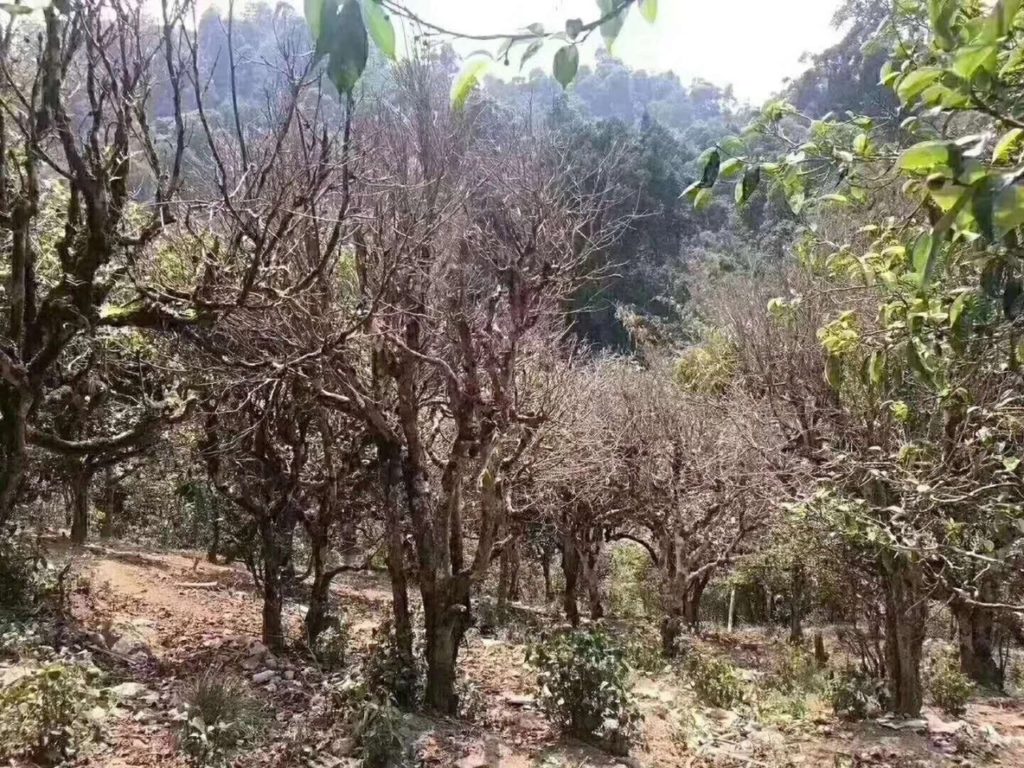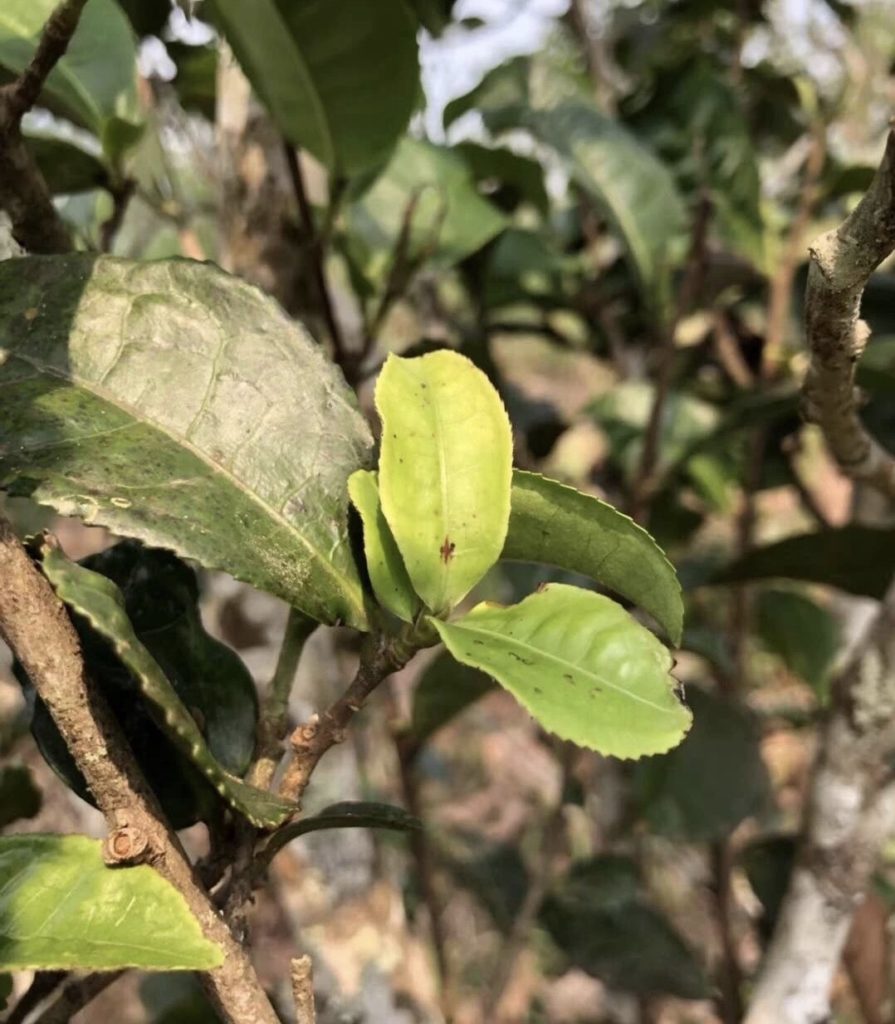Drought hits Yunnan hard!
Puer tea, a 21st century phenomenon, is going to take a big hit in 2019. Climate change has had a direct impact on the quantity and quality of puer tea. 2019 has been especially bad. On May 10, 2019 the Yunnan Meteorological Observatory gave an orange level warning for drought in northwestern, central, and southern Yunnan, orange being the worst.

The drought effects were dramatic in February. The soil in many places in Xishuangbanna was dry and deeply cracked, and the grass was dry and yellow, dying in the hot sun. Spring harvest time in March and April found old tea trees dormant and barely producing new leaves.
Tea trees are very hardy and live a long time. However, this year, even those deep rooted trees could not escape death from the drought. In Yiwu, famous for ancient trees and quality tea, many trees burned in a nasty fire caused by the dry conditions.
Terraced tea, closely planted bushes that produce about 92% of Yunnan’s puer crop, has not fared well either. Though the majority of these bushes have survived for 60 years, many succumbed to the drought and had to be pulled up and burned. The cost of replacing them, coupled with the lack of productivity as they grow, will have significant impact on small and medium sized growers. The effects of this drought will be felt for many years to come.

It started raining yesterday, May 27th. The rain is coming at last to rescue the second spring plucking, although summer season tea is widely accepted as being inferior to spring tea. The rain will also help other crops that small farmers depend on. These rains are the beginning of the Southern Asia monsoons, but for some time now these major monsoons have not been enough to counterbalance the drought.
In the 21st century, the drought in Yunnan has become more frequent and serious. The Chinese media has reported at the ongoing drought since 2001. The drought has not ceased in any significant way since then, and the chances of it ending are unlikely.

What will this mean for puer tea drinkers?
In general, it means poorer quality and higher prices. Quality is poorer because the spring crop was severely damaged, and prices higher because the tea that was not affected will be in short supply. It is important to remember, however, that Yunnan is not a microclimate that is homogeneous throughout the province. The worse conditions are being shouldered by the South, especially Xishuangbanna.
American consumers that are really into puer can get pretty geeky and write prolifically about it on social media, especially Reddit. Rarely, however, are the weather conditions part of the discourse despite their direct impact on quality.
When we talk about puer tea in relationship to quality, we are talking about maocha. According to botanists and the Chinese Academy of Science, the maximum available old tree maocha in a good year only amounts to about 8% of the total harvest. It’s not hard to estimate the percentage declines in a severe drought year. Now that old tree maocha has become so precious, it strains the imagination to think that any makes it into commercially available cakes, even in good years.
The severe weather situation is perhaps eclipsed by the already hyper-competitive market at source. It’s very difficult to really know much about the maocha that goes into sheng puer cakes, the kind of puer that puer geeks and collectors are most interested in.
It is no secret where the best maocha is available in the spring. The scene on the ground in these famous areas looks like an amalgamation of movie stars, wives of the very rich, puer hustlers from Dongguan, Hong Kong, Taiwan, and Korea, all camping out under rough conditions for the first maocha of the spring. That’s the only way you will know with marginal certainty about the maocha.
Wrappers mean literally nothing. There will be a company stamp that fall within the center-folded clump at the back of the cake with a date that indicates when it was pressed. China, however has no intellectual property laws to protect the company’s wrapper, and fake wrappers that are exact copies are easy to purchase, as are wrapperless cakes waiting to be wrapped.
Not only have the farmers faced drought this year, but they also face an invasion of Spodoptera frugiperda, called a grasshopper moth by the Chinese. Originating in the Americas, it leapt to Africa, hit India in August of last year, and now has infected 13 Chinese provinces. The only good news is that it doesn’t affect tea.
